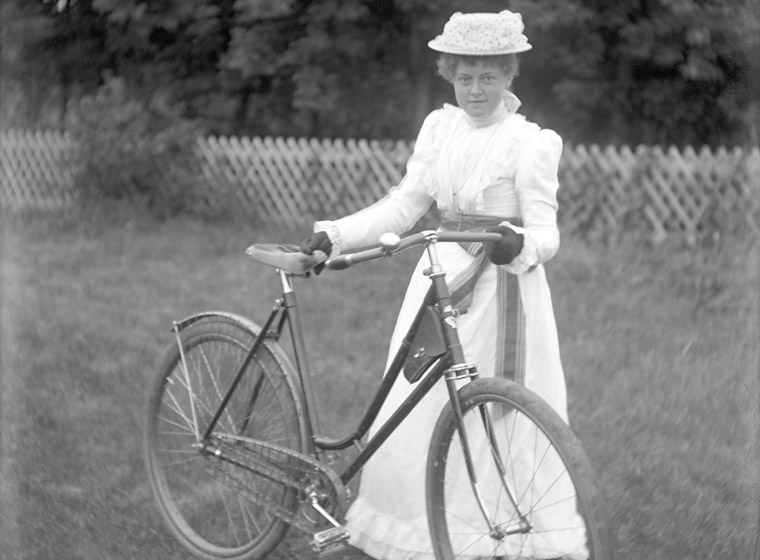Mennonite Heritage Village’s (MHV) upcoming Gala Fundraiser on June 27 will give you the opportunity to own a piece of history. MHV, in partnership with the Mennonite Historic Arts Committee (MHAC) will be auctioning off large-scale prints of historic works by photographers Johann E. Funk (1878 – 1968) from Schoenwiese and Heinrich D. Fast (1894 – 1977) from Gruenfeld.
The prints on auction were featured in the exhibit “Mennonite Village Photography: Views from Manitoba, 1890 – 1940.” This unique exhibit, which was on display at MHV in 2024, provided a freeze-framed image of a distinctive and fleeting period in the history of Mennonite village life in western Canada at the turn of the last century. It was created by MHAC, a team of specialists on Mennonite history and material culture committed to the preservation, publication, and exhibition of historic Mennonite art forms.
The first photographer, Johann E. Funk, was born in 1878, four years after his parents arrived in Canada from the Bergthal Colony. He grew up in the Mennonite East Reserve village of Schoenwiese and belonged to the Chortitzer Mennonite Church. He married Barbara Wiebe in 1903, and the couple had a daughter, Maria, before Barbara died of tuberculosis in 1907. Funk later married Helena Klippenstein and the couple had nine children. Funk is remembered as an inventive and inquisitive man who enjoyed life and was “always interested in new things” and his many and varied hobbies earned him a unique reputation. He was one of the first people in his area to get an automobile and one of the first to have electricity in his home, which he achieved with a windmill and a row of wet-cell batteries. Like most Mennonites at the time, Funk earned his living through farming, but he had several side interests as well: he headed a co-op telephone exchange in the Chortitz area, drilled wells, designed and built spinning wheels with a wood lathe, and rebuilt cars into trailers, which gave him the Low German nickname “Trailer Funk.” His photography career was relatively brief, spanning the years 1890 to 1904, ending shortly after his first marriage. His grandchildren recall stories of a church minister visiting Funk to admonish him against the Biblical injunction of producing “graven images.” Forty-four of Funk’s glass plate negatives have survived. After being carefully preserved by his son Abe for many years, the negatives were donated to MHV’s collection in 2010, where they remain in the museum’s care. Although his career as a photographer was brief, his photographs demonstrate much skill – they are focused and sharp, which have allowed them to be printed at an astonishing scale.
The second photographer who will be featured at the photography art auction at the Gala Fundraiser is Heinrich D. Fast. Fast was born in 1894 in the village of Gruenfeld (later Kleefeld), on the Mennonite East Reserve, with family ties to the Kleine Gemeinde Mennonite church. Fast grew up in a household that celebrated innovation and invention. His father, besides being a farmer, also joined others in buying a cheese factory in Gruenfeld and was a mechanic and blacksmith. His company, H. L. Fast & Sons, was especially known for manufacturing equipment, including self-propelled mowers and the first ditch-digging machine. Son Heinrich (or Henry) took up photography as a young man, using a No. 3A Autographic Kodak Jr. camera. Though he became a market gardener and farmer, Heinrich also followed in his father’s footsteps and was renowned for his skill in repairing and inventing useful machines. The glass and film negatives from which the photographs in the auction were printed have been well preserved by Heinrich’s son, Dennis Fast, also a professional photographer.
In the work of these two photographers, we get a glimpse into the life of Mennonites in Manitoba around the turn of the twentieth century. In the photographs we see changing technologies, from sleighs to buggies to automobiles, and Mennonites adapting to these new ways. We see changing styles in architecture as well as in personal choices in fashion. We also get a rare and privileged glimpse ‘behind-the-scenes’ of everyday Mennonite village life.




